SOME people just fall into the job they were born to do. “Cam was about 15 years old when I first met him and he was chook mad. He’s always loved chooks,” Angus Shepherd says with a grin as he steps into the egg incubation room on his farm, Burrulaa Crossing, just outside Manilla in North West NSW.
Angus and his business partner Cameron Ward have been working together to produce a unique breed of chicken that is taking the food scene by storm – and attracting a premium from high-end restaurants.
The Farmer visited Great Northern Poultry in August to see what all the fuss was about the black-skinned, black-boned, fluffy-feathered, five-toed chicken catching the eye of Australian foodies. (Poultry farmers will know this, but for the rest of us, most chickens have four toes.)
About 10 years ago, Angus bought a Silkie chicken business from a neighbouring grower who had been producing the breed for meat. “I started because I was mainly interested in creating an opportunity for small-scale agriculture,” says Angus.
RELATED: From fleece to farmed meat: alpaca farmers owning their niche
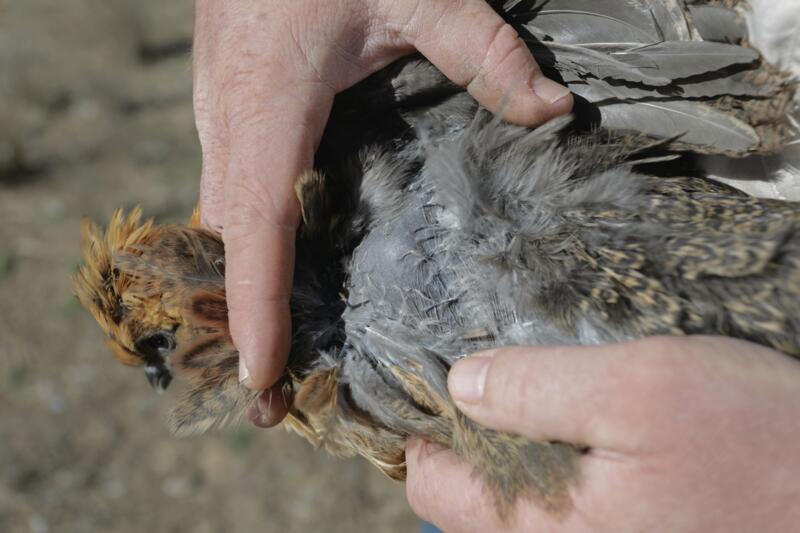 Black skin and bones set the crossbred chickens apart.
Black skin and bones set the crossbred chickens apart.
Starting with 100 breeders as well as some showbirds, Angus slowly expanded his flock. Eventually the original breeders were culled to mitigate disease concerns, allowing a fresh flock to begin breeding.
The business grew to the point where Angus either had to expand or give up. That’s when Cameron came on board. About four years ago, they split the operation, with Angus heading up their selective breeding and hatching program and Cameron taking on growing and product marketing. Together they run their joint business across two properties in the Nandewar Range.
The pair are proof that different ages can bring fresh skills to a partnership. “I’m 15 years older than Cameron so I’ve got a different point of view and was brought up in a different generation,” Angus says.
“He picks up the things that I don’t do well, like marketing, all the online stuff and talking to people. Oh, and I hate the paperwork, so Cam does all that.”
Video produced by Ellouise Bailey on her mobile phone.
Their crossbreeding program has led to a successful new breed they’ve called the Black Namoi, named after the Namoi River that runs through Angus’ property. But they are not giving up their breeding secrets. “We’d have to kill you if we told you that,” jokes Angus.
What they will reveal is that they have crossbred Silkies with heritage breeds to cultivate a larger chicken with a higher fat proportion and a less gamey flavour than the conventional Silkie.
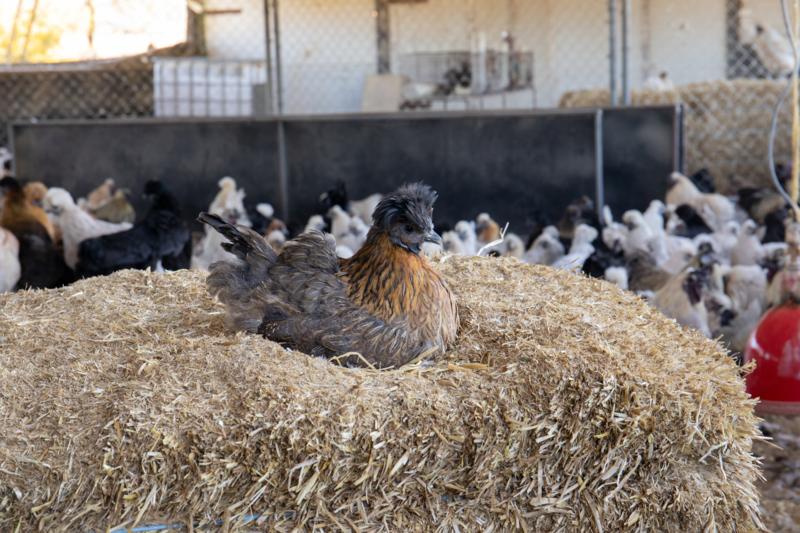 A Black Namoi on a hay bale in the breeder shed at Burrulaa Crossing. The chickens’ feathers come in a variety of colours, but they all share the same skin.
A Black Namoi on a hay bale in the breeder shed at Burrulaa Crossing. The chickens’ feathers come in a variety of colours, but they all share the same skin.
Cameron explains, “In the crossbreeding, we got a little more size but compromised on colour and as we keep breeders now, we will select for size and colour and bring them back to that darker colour.” The unique skin colour is caused by hyperpigmentation, an unusually large amount of melanin.
Both Cameron and Angus say their Black Namois are much tastier than their light-fleshed counterparts. “People always tell us it tastes like chicken did years ago. It’s just got that flavour supermarket chicken doesn’t have anymore,” says Angus.
Silkies have been consumed medicinally in China for thousands of years, with locals believing they have many benefits including boosting immunity and building muscle. Traditionally, the bones and meat were used to make a rich amber broth.
They remain popular with Australia’s Chinese community, with about 85% of Great Northern Poultry’s birds going to ethnic Chinese customers. But Angus and Cameron saw an opportunity to bring the product to a broader range of Australian dinner plates, and started their crossbreeding program with that in mind.
“We want to get them out of the stockpot because Australian culture isn’t very interested in that. They want to be able to put them on a barbecue or in a frying pan or roast them,” says Cameron.
Pasture-raised chickens help regenerate farmland
The new bigger breed isn’t the only thing giving the chickens a point of difference. They are also PROOF (Pasture Raised On Open Fields) certified. “It’s all about having that unlimited access to a paddock,” says Cameron as he opens the shed doors to let the chickens out for the morning at his family farm, Glenbrae, north of Gunnedah.
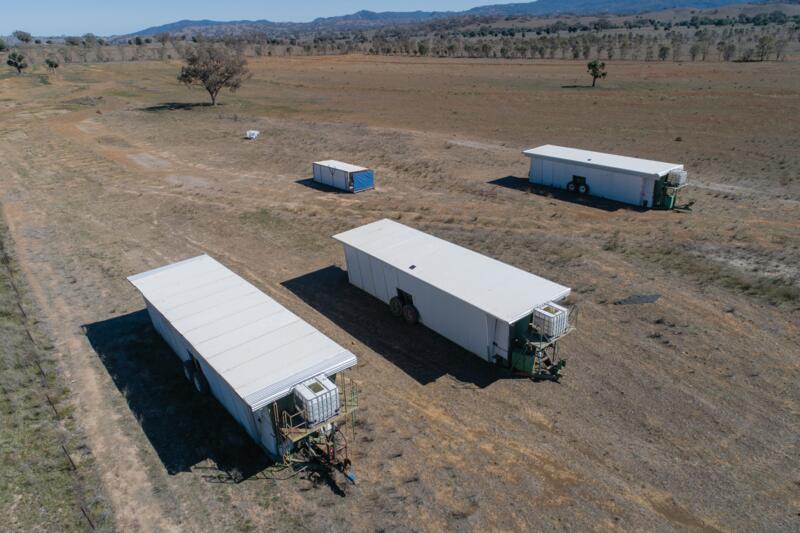 The mobile growing sheds at Glenbrae.
The mobile growing sheds at Glenbrae.
“I don’t think it’s absolutely necessary to have the certification, but anyone from the city looks at it and goes, well they’ve had an independent person come in and evaluate them so it must be legit. We’ve just got that distance between us now and a lot of people in the city just don’t know how it works.”
RELATED: Poultry in motion: the chicken farmer keen on education
The chickens are grown out in mobile poultry sheds that are regularly towed by tractor to a new location. Cameron says shifting the sheds instead of keeping the birds on a single plot is helping to improve the pastures by spreading chicken manure and allowing time for the land to rest and regenerate.
“Since we’ve been doing the poultry we haven’t had any substantial rain so we haven’t seen the full capabilities of what the manure can do for the pasture yet, but you can see with the little moisture we’ve had, the grass is up another foot taller than where it hasn’t had the poultry manure,” he says.
RELATED ARTICLES:
The power of pig poo
Family run sustainable paddock-to-plate business tastes good
The Riverina farmers passionate about soil conservation
Insects in overdrive: how dung beetles are helping farmers
When he put a pressure probe into the ground to test how compacted the earth was, he found it was significantly easier to drive down where the chickens had been. “It’s stimulating all the bugs and activating the soil and that’s allowing it to become more aerated and softer and then more moisture gets in and all sorts of good stuff, which is what we’re aiming for.”
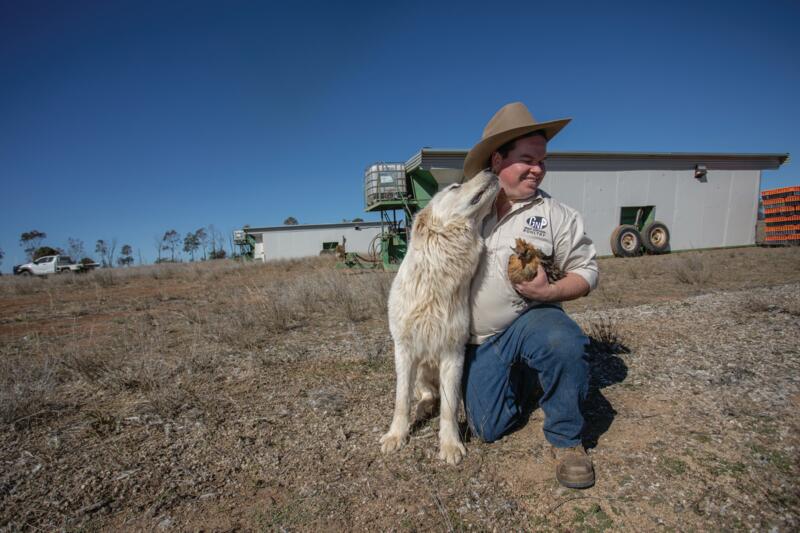 Cameron with a young Black Namoi and Rufus, the maremma sheepdog that guards the chickens.
Cameron with a young Black Namoi and Rufus, the maremma sheepdog that guards the chickens.
The chickens are getting approximately 10% of their diet from pasture and the rest from grain mixed on farm. While the drought has impacted the chicken’s ability to access more from the pastures, Cameron says they are not as drought dependent as other industries.
Although the business has been affected by commodity price increases, they estimate they’re currently saving about $300 per tonne by mixing their own grain rather than buying ready-mixed feed.
Cameron and Angus are both passionate about regenerative practices and holistic land management. To improve pastures, Cameron’s family invested in a direct seeder and sowed about $4,000 worth of pasture seeds, such as oats, rye, clover and legumes, in March. They recently successfully applied for about 400 native trees from Local Land Services, which they will plant once conditions improve.
RELATED ARTICLES:
How farmers are adapting to climate change
Nature covenant adds value to Woomargama Station
Improving pasture growth with carbon grazing
Henty farmers committed to regenerative agricultural practices
“All those paddocks had no timber left in them when we bought the property [about 20 years ago] due to poor management of the soil in the past,” Cameron says.
“We’ve planted thousands and thousands of trees – maybe 15,000 or more. The majority came out of our own pocket. Our plan was to put in a bit of timber and get some biodiversity and ground cover going again.”
Angus employs a similar mindset at Burrulaa Crossing, which he’s had for about 15 years. He believes that continually expanding holdings isn’t always the best policy.
“Rather than just buying more property and expanding the size of the farm, we decreased the size of the livestock and added the different layers, like chickens, ducks and irrigated lucerne, as well as running lambs and cattle,” he says.
Great control of supply chain increases farming profits
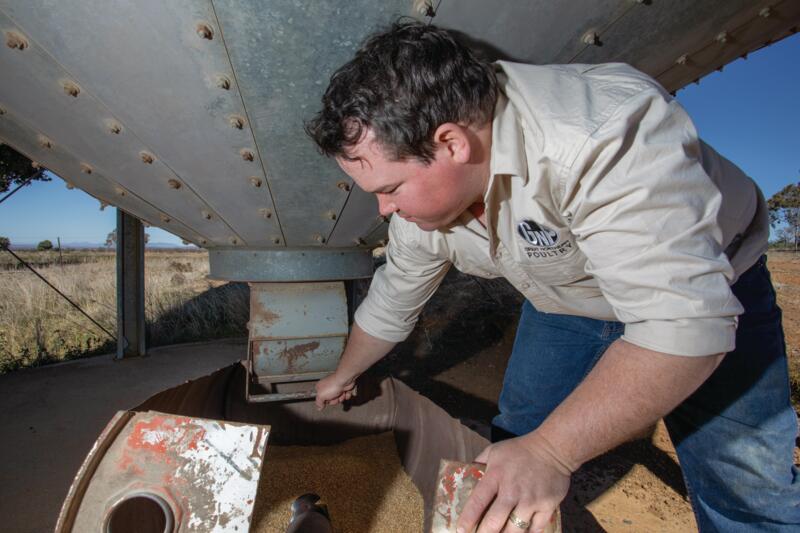 Cameron checking the chicken feed in the silo.
Cameron checking the chicken feed in the silo.
The next stage in their plan is to put in a processing facility on Cameron’s family farm or a neighbouring property, to save driving three or four hours to Guyra or Maitland to have their chickens processed. Cameron says this would probably increase their production from 1,000 birds a fortnight to 1,000 a week.
Angus says they intend to set up the processing facility on a not-for-profit basis so local family businesses will be able to process and box their own poultry and meat.
“This means people can have control over their own product, right down to delivering it to the customer. Then you can start to make a profit.”
At this stage, four local families are interested in being involved in an independent processing facility.
Clever marketing captures the attention of Australian foodies
Angus and Cameron put the secret to their success down to knowing their niche – and marketing to it. Most of their buyers are big Chinese-Australian wholesalers that consistently purchase a large percentage of their birds to sell into the major cities.
“We are now trying to broaden the market by selling it on to restaurants. Every restaurant is looking for that edge, looking for something different,” says Angus.
They employ a marketing agent to approach chefs to “sell their story” – and thus their chickens.
“The traditional market isn’t concerned about where the birds come from or how they’ve grown, whereas the new foodie markets are,” Cameron says.
“So we pick people who know who we are, and what we’ve been doing with the birds, and how we’ve been treating them, and what they’ve been eating, and the whole story basically.”
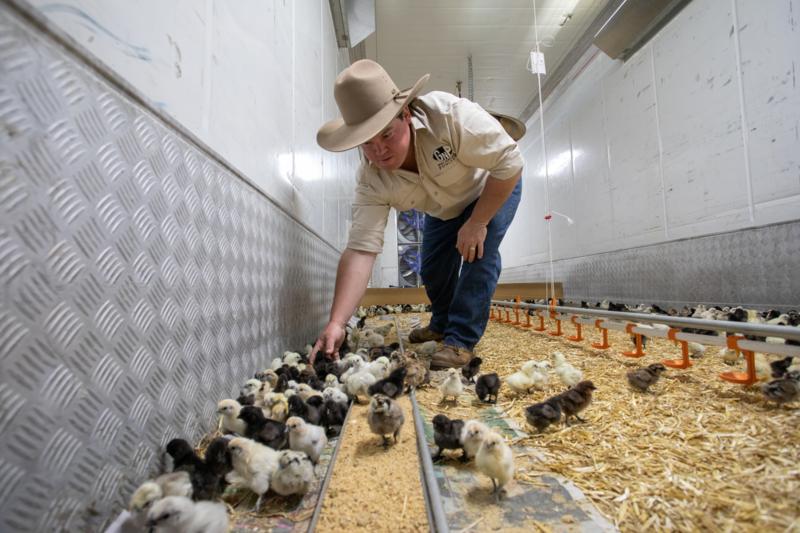 Cameron Ward with four-day-old chicks in a brooding shed on his Gunnedah property, Glenbrae.
Cameron Ward with four-day-old chicks in a brooding shed on his Gunnedah property, Glenbrae.
While their wholesale buyers prefer their chickens to range from 300g-750g, their high-end buyers are looking for birds sized 750g-1.3kg. Restaurants also pay a higher price than their traditional buyers.
“There’s definitely more money in the high-end market but it takes longer to grow them and marketing takes a lot of time because you need to build that trust,” says Cameron, who has been busy growing the operation’s online presence in the past six months, building a website and becoming more active on social media to get the word out.
RELATED ARTICLES:
Consumer demand confirms organic farming is no longer a niche
Industrious beekeepers nurture thriving family business
Maggots: The livestock feed no-one saw coming
In the meantime, they’re not too worried about competition. “By the time they start copying me, I’ll be doing something else,” says Angus.
“With this size operation you have to keep reinventing yourself. We need a point of difference, but don’t chase the scale, as you’ll get beaten every time by bigger competition.”
Promoting pasture-raised duck eggs to the Australian public
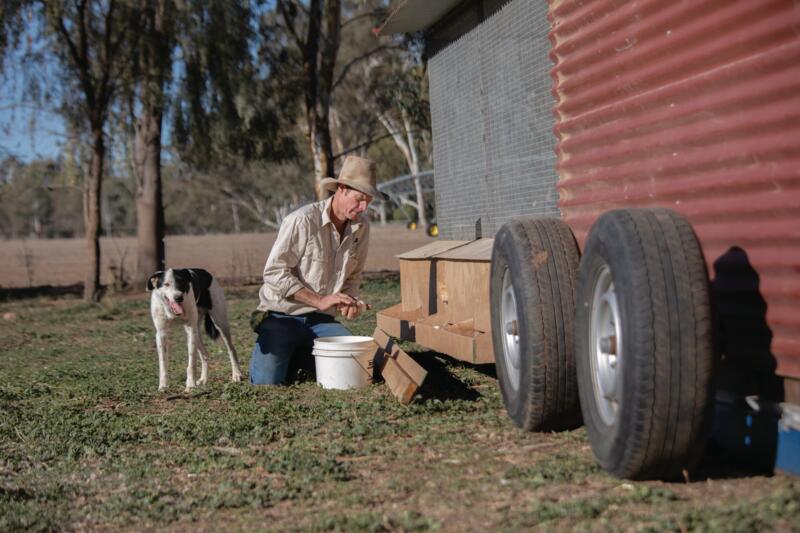 Angus gathers duck eggs from the collection areas he’s built at the front of the night nesting boxes.
Angus gathers duck eggs from the collection areas he’s built at the front of the night nesting boxes.
Angus and Cameron are exploring a new venture growing ducks. “We are doing this with one goal in mind, and that’s to supply a clean, pasture-raised duck egg to the market,” Angus says.
To achieve this, they have been testing ways to keep the eggs clean, to avoid having to install a more complex washing system. Ideas include roll-away nesting boxes with astroturf nesting pads, where a gently sloping floor allows eggs to roll off the pad ready for collection.
It’s taken them six months to get the new business off the ground but they now have about 300 ducks producing about 120 eggs a day. They’ve already sold their first batch to a wholesaler who is distributing them to restaurants around the country, as well as working their way into the larger retail market.
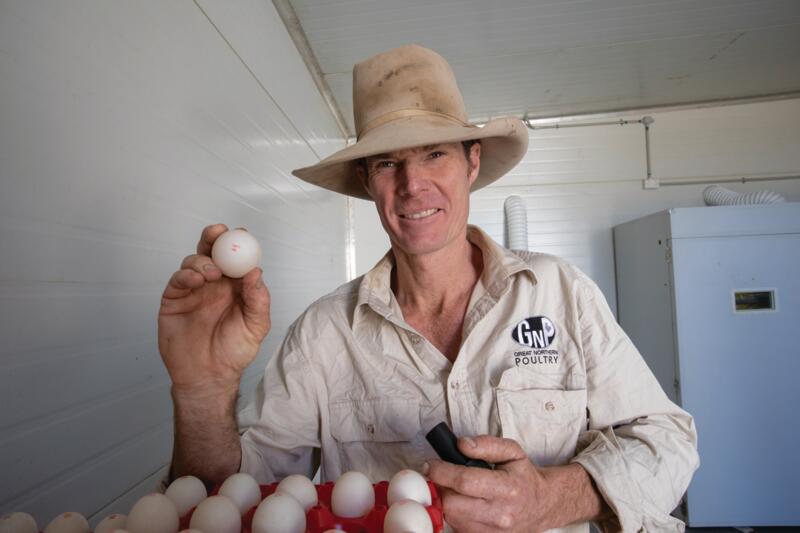 Angus stamping the duck eggs ready to be sold on.
Angus stamping the duck eggs ready to be sold on.
Again, regenerative farming is at the core. “Ultimately we are hoping to regenerate a fair bit of the country with the ducks and the mobile chickens,” says Angus.
RELATED ARTICLES:
The caged-egg vs free-range debate
Reaping the rewards of biodynamic farming
Milk matters: the dairy farmers innovating through education
He says the hardest part about promoting their products to the Australian market is changing people’s habits. “We’ve got two products that are not the norm,” he says. “But if you want to make money, you need to do something no-one else is doing.”
“We are doing this with one goal in mind, and that’s to supply a clean, pasture-raised duck egg to the market,” says Angus.
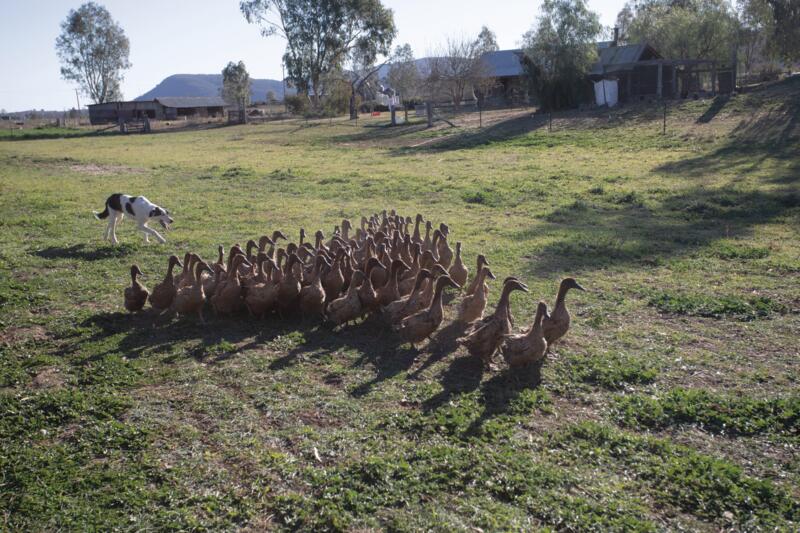 Farm dog Wolf rounds up the Khaki Campbell ducks.
How Black Namoi chickens are grown
Farm dog Wolf rounds up the Khaki Campbell ducks.
How Black Namoi chickens are grown
Great Northern Poultry operates across two farms, 40km apart. Angus and Cameron’s new breed of chicken is the result of their ground-breaking crossbreeding program involving the black-skinned Silkie. Here’s how they grow their unusual chickens:
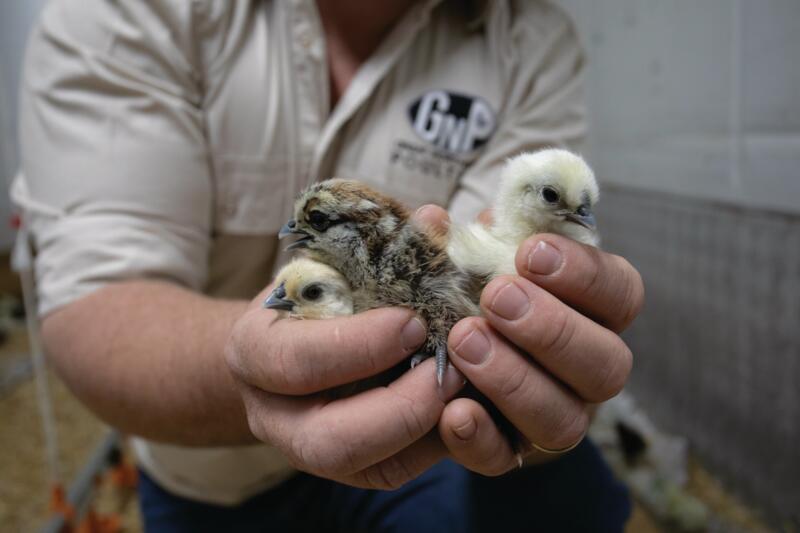 Four day-old chicks.
Four day-old chicks.
- Stage one:
- Angus Shepherd’s property houses the breeder shed and incubators that can accommodate up to 3,500 eggs at a time. The eggs stay in the incubator for about 21 days before hatching.
- Angus practices selective breeding in his genetics program and chooses breeders based on traits such as darker skin.
- Stage two:
- Day-old chicks are transported to Cameron Ward’s farm. The system is closed, so there are no birds brought in from outside the farms. Biosecurity concerns are mitigated by cleaning and sanitising crates and switching clothing between farms.
- Chickens for the wholesale market are grown for 8-10 weeks before being sent for processing. Birds sold to restaurants are grown for 14-16 weeks.
- Stage three:
- At the Ward farm, hatchlings are kept in two converted shipping containers (brooding sheds) with insulated walls to create a stable environment.
- Stage four:
- After three weeks, they are moved to mobile grower sheds in the paddocks – four converted cotton-module builders insulated with coolroom panelling.